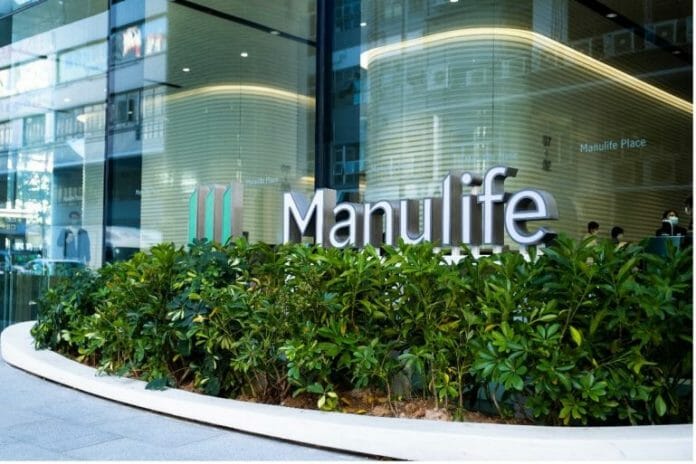Hopes for a soft landing may be growing, but according to Manulife Investment Management Global Chief Economist Frances Donald, she believes the U.S. economy will slip into a mild to moderate recession within the next six months. Simply put, she expects to see two consecutive quarters of negative GDP growth, accompanied by a rise in the unemployment rate.
Instinct might suggest this classifies as out-and-out bad news for investors, but MIM thinks it’s worth questioning whether that’s necessarily true or does it have more to do with how we’re conditioned to viewing the economy through binary lenses: growth (good) versus recession (bad)? As a long-term investor, Frannces thinks this “recession or no recession?” framing is unhelpful at best and, at worst, can stand in the way of investment returns. Instead, a more thoughtful approach is needed.
In the coming months, MIM believes the consensus view in the market will revert back to a U.S. recession being a base case. Once that dreaded word comes back into play, investors should assess those newly downbeat forecasts through the lens of five core considerations that is believed to hold more meaningful investment implications than GDP forecasts alone.
- Focus on momentum, not recession labels
Whether or not economic activity has contracted to the extent that it fits the official definition of recession is much less important than the decline in growth momentum that lies ahead. Accordingly, MIM’s view is lending, consumer activity, capital investment, and, among other things, earnings will weaken in the coming six months. These developments are likely to be far more relevant to investors than the mathematical computation of a lagging economic indicator. While it’s plausible – in an alternative scenario – that the math works out and will narrowly escape the technical definition of a recession, the difference between, let’s say, for example, a 0.2% contraction and 0.1% GDP growth is unlikely to register with investors. In fact, MIM believes the latter scenario will also represent a more difficult environment for risk assets.
- Monitor factors that could alter the next recession
Any upcoming recession could well be different from those we’ve been through in the past. There’s a long list of reasons why this next recession—should it materialise—could be different, but three in particular stand out.
- Desynchronisation
The U.S. and global economies are currently heavily desynchronised across a range of factors. Crucially, the U.S. (and global) manufacturing and services sectors are running on separate cycles in a way that could see U.S. manufacturing recover even as the services sector weakens in the next six months. This environment could lead to sector- and company-specific opportunities even as the broader economic environment deteriorates.
- Labour hoarding
MIM believes that the labour shortage is a structural issue that will continue to pose an important challenge to businesses even as recession risk rises. While it won’t necessarily prevent higher unemployment rates in the coming year, labour hoarding may become more commonplace, which could mean a less pronounced rise in the unemployment rate than in past recessions.
- Heightened uncertainty
It’s worth underscoring that we’re operating in an environment defined by heightened geopolitical risk, pronounced supply-side-driven inflation, and more frequent and severe weather events. From an academic point of view, there’s no doubt that these factors will distort and test our understanding of recessions.
- The U.S. economy can slip into a technical recession and still be the cleanest dirty shirt within a global context
Where investors are concerned, economic activity is mostly viewed in relative terms (versus its regional and/or global peers). Without a doubt, a U.S. recession/slowdown will present a more challenging investment backdrop domestically, but even in that instance, the United States—in our view—is still likely to be the cleanest dirty shirt as the global economy shifts into lower gear. Europe, for instance, may stumble through an even worse 12 months, and we expect other developed economies such as Canada and Australia to experience deeper contractions due to their sensitivity to elevated interest rates. Emerging markets are also likely to struggle under the weight of higher oil prices, slower Chinese growth, and a strong U.S. dollar. It may sound counterintuitive, but within that context, a forecast calling for a U.S. recession is still compatible with the view that U.S. risk assets can still perform well globally, as we had outlined in our Multi-Asset Solutions Team’s asset allocation views recently.
- A mild recession could be less challenging than stagflation
MIM’s view is a recession in the coming months may not be the worst-case outcome for investors. Consider a standard recession scenario: growth declines, central banks cut interest rates, leading to a sizable recovery in growth. For most medium- to long-term investors, the pain is typically most acute in the near term while the opportunities could translate into gains in the longer term across asset classes. The alternate soft-landing scenario that we keep hearing about—one in which growth slows but not in a material way—may at first glance seem less negative, but could produce a more challenging investing environment in which growth declines while central banks continue to hang on to their hawkish bias. In such a scenario, growth’s likely to stagnate and a meaningful economic rebound is unlikely to materialise. MIM says an environment where the economy manages to dodge a recession but gets stuck in a prolonged period of <1% growth could well be more challenging to investors.
- Remember your investment horizon
Finally, investors’ investment horizon makes a material difference in how they should handle a recession. While we spend a lot of time examining recession risk, we devote just as much time thinking about what the post-recession rebound might look like. MIM believes that the longer-term outlook is one characterised by higher-quality growth, slightly higher inflation, and interest rates that are higher than what we’ve gotten used to in the post-global financial crisis environment. From an asset allocator’s perspective, it’s fair to say this typically translates into a bullish medium- to long-term investment outlook.









